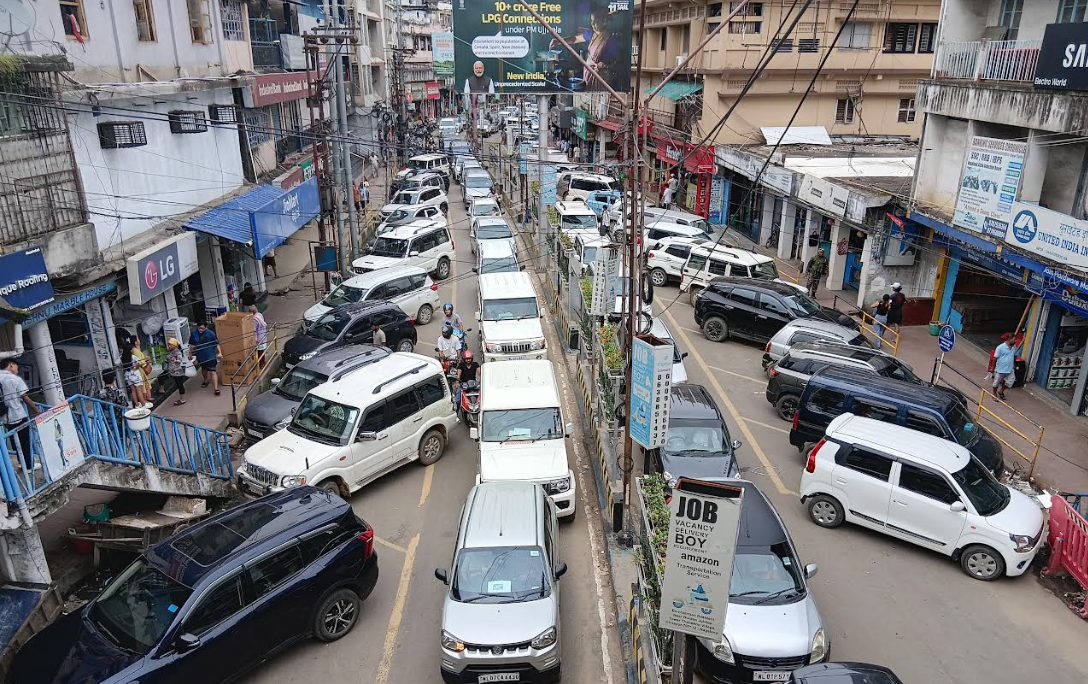The extension of the one-way traffic system along Nyamo Lotha Road (erstwhile Church Road) up to Holy Cross School Junction has sparked a range of responses from residents, even as Dimapur Police reaffirmed their commitment to a streamlined and inclusive traffic management plan.
The one-way arrangement, initially introduced in October 2024, was implemented to ease traffic congestion during the construction of the Road Over Bridge (ROB) on NH-29 near Hotel Tragopan. With the ROB now complete, police have launched a fresh traffic audit to reassess the city’s traffic dynamics.
In a statement published on May 4, Dimapur Police reiterated that any alterations to the traffic plan would be data-driven and aimed at long-term urban relief.
Officials emphasized their goal of establishing an efficient and inclusive traffic flow system that addresses core structural challenges, rather than offering short-term fixes.
Despite these assurances, no substantial modifications have been introduced, leading to a growing public discourse.
The current system redirects traffic from Supermarket, Eros Lane, and MP Road onto Church Road, which now functions as a one-way route. While this has alleviated congestion in some areas, it has reportedly created new bottlenecks at the Holy Cross Junction, particularly during peak travel times.
Speaking to Nagaland Tribune, a commuter acknowledged that the new traffic model, though still in its early stages, marks an essential step in long-term urban planning. The commuter admitted the system is not without flaws but argued that it is an improvement over previous approaches that only treated surface-level traffic concerns.
Download Nagaland Tribune app on Google Play

The installation of road dividers between Bata Charali and Clock Tower Junction has also received a mixed response. Some residents argue the dividers have instilled more discipline in vehicle movement, while others advocate for refinements rather than a rollback. Suggestions include improved signage and better coordination during peak hours.
A frequent traveler remarked that rather than reverting to the old traffic system, authorities should focus on refining this one. Better timing adjustments and coordination could ease congestion without discarding the entire plan.
Amid varied opinions, there is a growing consensus for collaborative solutions. Citizens are now calling on the administration to use findings from the ongoing traffic audit to fine-tune the system, ensuring it balances efficiency with accessibility for all road users.

